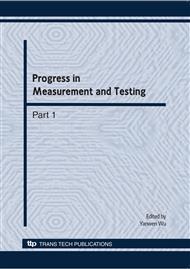p.1223
p.1229
p.1235
p.1239
p.1244
p.1250
p.1254
p.1259
p.1267
Study on Peanut Leaves’ Delayed Luminescence Characteristic under Excitation of Alternating Electric Field
Abstract:
In this paper, peanut leaves’ delayed luminescence characteristic under excitation of alternating electric field was studied. The decay law of Delayed Luminescence Intensity with time and the change of Initial Light Intensity and Attenuation parameters with the frequency, peak voltage and excitation time of alternating electric field were observed. It was found that: Under the three kinds of excitation, the leaves’ Delayed Luminescence all presented the hyperbolic decay law with the time. In the frequency ranging from 4000HZ to 30000HZ,the Initial Light Intensity showed a trend of first increasing and then decreasing, but attenuation parameters showed a trend of first increasing then decreasing, increasing again and reducing again. In the excitation time ranging from 5min to 30min, the Initial Light Intensity and attenuation parameters all showed a trend of first increasing and then decreasing with the frequency increasing; In the peak voltage ranging from 500v to 10000v, the Initial Light Intensity showed a trend of first decreasing and then increasing with the peak voltage increasing, but attenuation parameters showed a trend of first increasing and then decreasing. The reason is mainly due to that the frequency, the peak voltage and excitation time of alternating electric field have an effect on the electrons transition in non-bonding oxygen atom which locates on chlorophyll’s carbonyl.
Info:
Periodical:
Pages:
1244-1249
Citation:
Online since:
May 2010
Authors:
Price:
Сopyright:
© 2010 Trans Tech Publications Ltd. All Rights Reserved
Share:
Citation:


